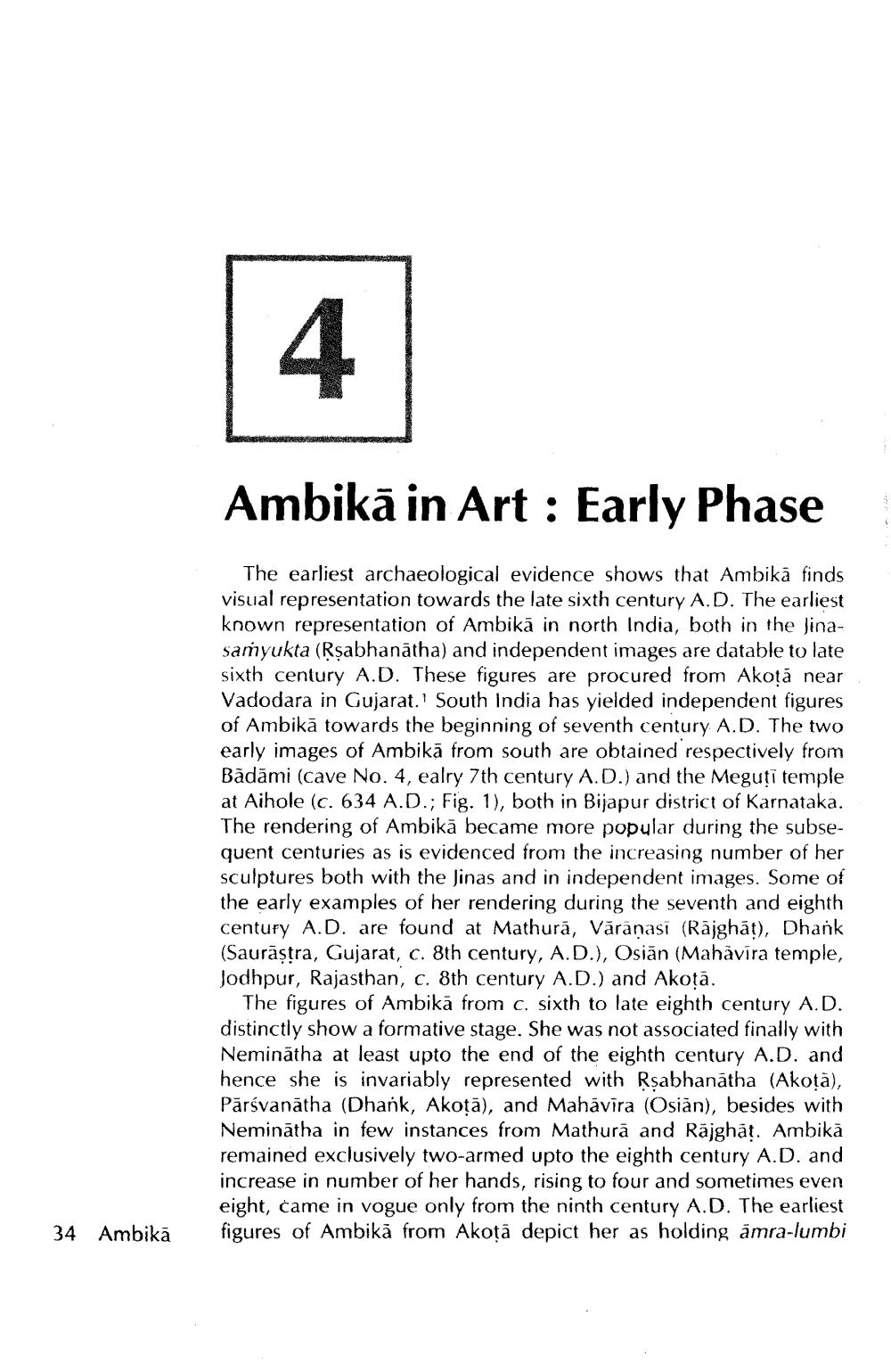________________
ROCKWONGAN
Ambikā in Art : Early Phase
The earliest archaeological evidence shows that Ambika finds visual representation towards the late sixth century A.D. The earliest known representation of Ambikā in north India, both in the linasamyukta (Rşabhanātha) and independent images are datable to late sixth century A.D. These figures are procured from Akotā near Vadodara in Gujarat.' South India has yielded independent figures of Ambikā towards the beginning of seventh century A.D. The two early images of Ambikā from south are obtained respectively from Bădāmi (cave No. 4, ealry 7th century A.D.) and the Meguti temple at Aihole (c. 634 A.D.; Fig. 1), both in Bijapur district of Karnataka. The rendering of Ambikā became more popular during the subsequent centuries as is evidenced from the increasing number of her sculptures both with the Jinas and in independent images. Some of the early examples of her rendering during the seventh and eighth century A.D. are found at Mathurā, Vārānasi (Rajghat), Dhank (Saurāṣtra, Gujarat, c. 8th century, A.D.), Osian (Mahāvīra temple, Jodhpur, Rajasthan, c. 8th century A.D.) and Akotā.
The figures of Ambikā from c, sixth to late eighth century A.D. distinctly show a formative stage. She was not associated finally with Neminātha at least upto the end of the eighth century A.D. and hence she is invariably represented with Rsabhanátha (Akotā), Pārsvanātha (Dhank, Akotā), and Mahāvīra (Osian), besides with Neminātha in few instances from Mathurā and Rājghāt. Ambikā remained exclusively two-armed upto the eighth century A.D. and increase in number of her hands, rising to four and sometimes even eight, came in vogue only from the ninth century A.D. The earliest figures of Ambikā from Akotā depict her as holding amra-lumbi
34 Ambika




